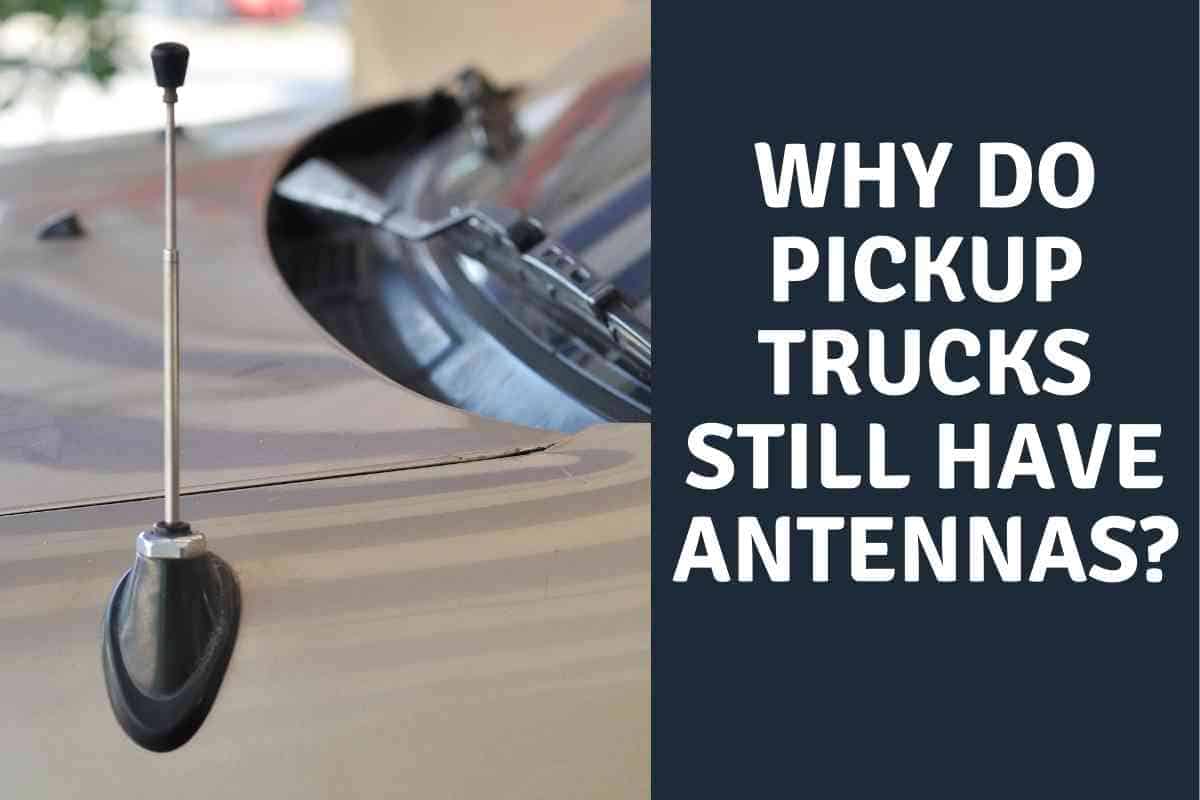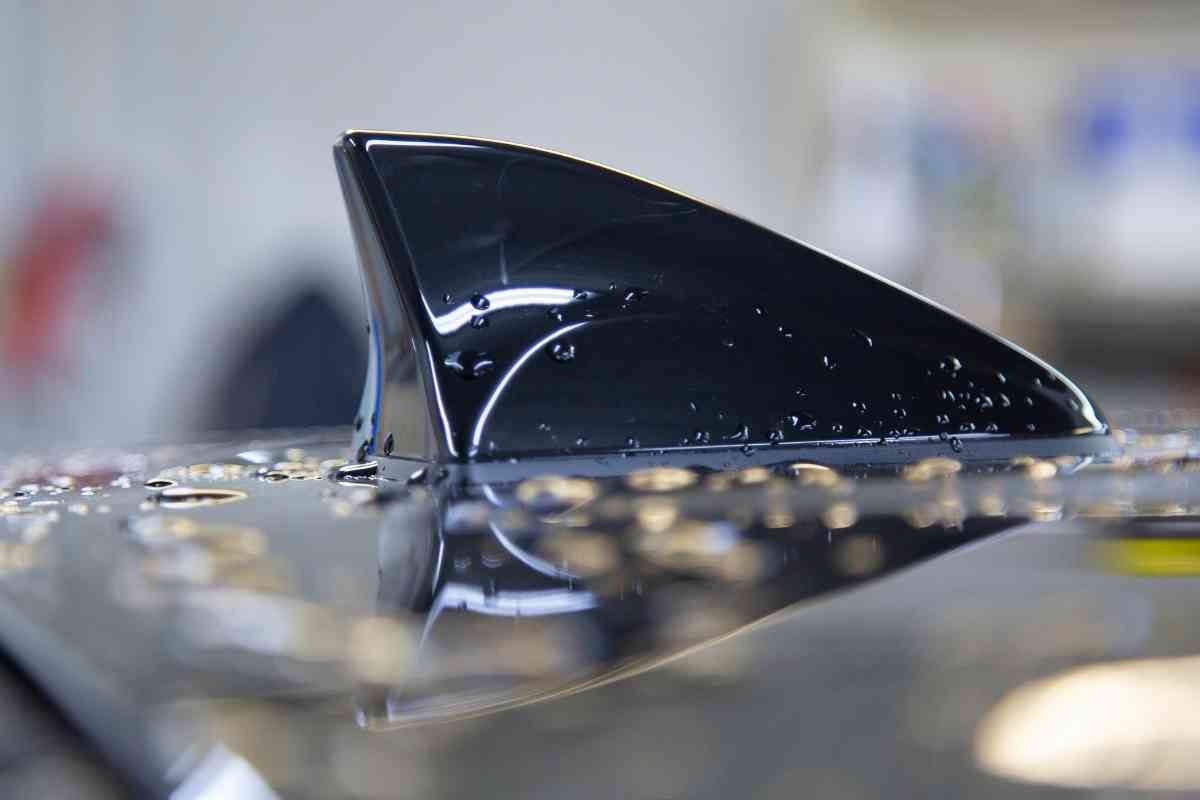Why Do Pickup Trucks Still Have Antennas? Explained!
Ever looked at a pickup and realized it still has a standard antenna? Many pickups have “ears” still, and many people would like to know why. While not noticeable at first, there’s a contrast between many of today’s sedans, SUVs, and trucks. There is a reason for trucks to continue to have antennas, and it has a lot to do with how and where trucks are used.

Why Do Pickup Trucks Still Have Antennas?
Among the reasons why pickup trucks still have antennas are ease of repair and location. Trucks are more often driven in rural areas, where a powerful antenna has the potential to reach further away radio stations. Also, note that that antenna might be a CB antenna.
Trucks are often built a bit differently from other vehicles. We’ll dig into the need for a different kind of antenna. We’ll also discuss where other car antennas are placed and why trucks are different.
We’ve worked in service departments as well as trucks and cars – we’ve seen the difference. We’ll find manufacturer info as well as common knowledge about how trucks are used compared to cars.
One reason is for looks
While not exactly a technical reason, some truck owners prefer to have a longer exterior antenna because they look like typical trucks. Trucks have slowly changed in appearance to reduce their weight and increase their fuel economy.
A typical pickup isn’t quite as boxy as it used to be. The antenna does little to affect fuel economy, so it is possible to retain an antenna – and a sharp, more aerodynamic look at the same time.
SUV and car drivers tend to focus more on fuel economy and sleek looks. Truck drivers might prefer an old-school look, with a bit of brawny styling – which the antenna included.
Increased range for radio
Most cars and SUVs have barely noticeable antennas. They look a bit like a shark fin and are often located on the top rear of the SUV. Walking by a taller SUV would make you unlikely to really notice what looks like a plastic knob. Another option includes embedding the antenna within the windshield of the vehicle.
The antenna for most trucks is commonly known as a “whip antenna” as it offers a long, rod shape. It can also whip a bit in the wind or at high speeds.
The larger whip antenna has the potential to offer a longer range for radio signals, whatever wavelength, FM radio or a CB radio. The quality of a radio station also could be better. In the case of a truck, many are driven in rural areas, where the signals for national and even local radio stations can start to fade.
A longer antenna gives the driver a better shot to have higher quality radio further away from the city – and not have to adjust because a weaker antenna no longer gets a good signal.
For a truck driver who is going to truly remote places, having a stronger antenna is their best shot at hearing real-time radio – even where their cell phone signal might not work.
Some trucks have two antennas
You may have also seen trucks that have two antennas. Trucks are a bit unique in the auto world as having a larger than normal cab can block signals coming from either direction. Having an antenna in front and back, or side to side enables trucks to receive all possible signals – even the ones that would otherwise be blocked by the truck frame size and exterior metal.

What is the proper length for an antenna?
There actually is an optimal length for car antennas. Older cars – and many trucks, have around a 32” antenna. This length offers the best combination of signal strength and aerodynamics – though it does compromise some people’s opinions about aesthetics.
Why have antennas changed?
In car entertainment has undergone drastic changes in the last couple of decades. Sirius XM radio offers music and entertainment with a stronger satellite signal that is, dare we say it, far higher quality than a radio signal.
You can practically hear the individual strings vibrate on a guitar with the right speakers. Most manufacturers give away a free trial of Sirius XM with their vehicles – whether you buy new or used.
Bluetooth has also become very popular in vehicles since the late 2000s. Bluetooth lets drivers and passengers stream music from their device, or an app, and have their choice in music. In most cases, the infotainment systems are also free. Some even come with WiFi for streaming or a way to connect your phone to the vehicle directly.
People who drive SUVs and cars also tend to have well-equipped smartphones and ready access to all the above. Truck infotainment systems were behind in technology until recently, but more truck drivers are using their smartphones for navigation and streaming now too.
There are indeed people who would prefer local radio.
Costs
A whip antenna that isn’t oversized can cost a bit more to implement for a manufacturer. Fiberglass antennas tend to cost a few dollars less. With a combined demand for more reliable technology and a lower price for a new vehicle, manufacturers can cut costs while delivering an experience that most people won’t even notice.
Mounting and repair
A truck driver is more likely to modify or repair their antenna. Some do so to introduce a stronger antenna for CB radio purposes.
Repairing a whip antenna is often as easy as unscrewing it from the mount and plugging a new one in. A fiberglass antenna embedded in the roof is more difficult to reach and remove. Truck owners and service departments can take longer to remove body panels and other equipment that might be in the way.
Considering how long trucks have had whip antennas, many truck owners and techs know how to do it themselves with the tools and their garage and a few minutes.
A whip antenna also makes more substantial mounts readily available, especially for longer antennas.
Durability?
It’s questionable if a whip antenna is more durable than a fiberglass antenna. There are stories about both blowing off cars or being damaged in high winds.
One potential issue with whip antennas is that they can become too long and break if you don’t have enough clearance. There is a reason why car washes and drive-thrus have height limits.
Is it actually for a CB radio?
The antenna you see might actually be for a CB radio. Truckers have CB radios to communicate directly over a much longer distance with more clarity – whether it’s to ask for help, give directions, or relieve the boredom of driving through a quiet area.
Note that CB radio antennas are not the same as a typical antenna. A typical antenna doesn’t have the range or power to help in the voice communications end of things.
